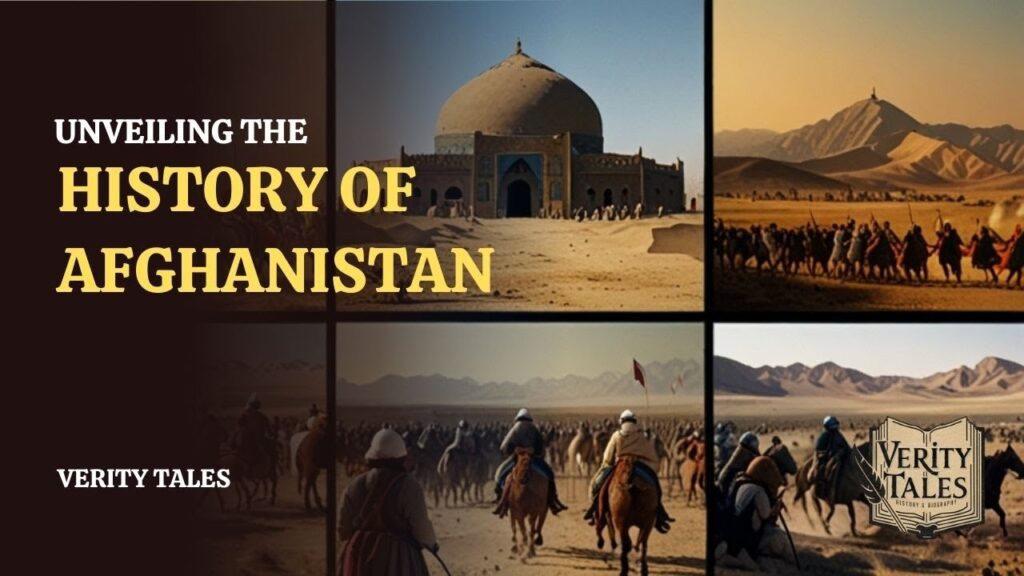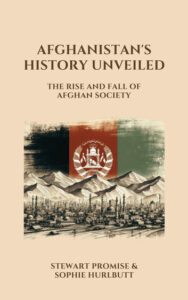Afghanistan, a nation rich in history of past civilizations.
The cradle of civilization moved in what is now Afghanistan between 3000 and 2000 B.C. when towns started to rise and set the stage for millennia of history.
Beginning documented history in the area, the Achaemenid Dynasty of Iran left behind a legacy of written documents still in use today.
With the rise of Alexander the Great, the winds of conquest swept across Afghanistan.
The Seleucids followed, leaving a mark on Greek civilization.
But Afghanistan’s story is one of adaptability. From the acceptance of Buddhism by the Mauryan Empire to the thriving commercial center built by the Kushans, Afghanistan saw a rainbow of cultures.
During the dawn of Islam, Afghanistan became a battlefield for empires.
Following their triumph at the Battle of Qadisiya in 637, Arab Muslims started an unrelenting push to introduce their religion all throughout the country.
The Ghaznavids became well-known, only to be surpassed by the Mongol armies under Genghis Khan and the relentless Timur, whose dominion included great parts of Central Asia.
In the 16th century, the Mughals and Safavids began decades of conflict to rule Afghanistan’s rugged terrain.
Amid the turmoil, however, the Durrani Empire—led by Ahmad Shah, often known as the “father of Afghanistan”—unified the Pashtun people and created a realm from Delhi to the Arabian Sea.
When Dost Mohammad became king, the Great Game began. Afghanistan became the front line for dominance between Russia and Britain for a century, both fighting for control of Central Asia and the entry point to India.
The echoes of the First Anglo-Afghan War rang across Afghanistan’s mountains and valleys as the British fought to establish their rule. Resilient and determined, Afghan leaders courageously safeguarded their freedom against the waves of colonial ambition.
Abdur Rahman, a visionary leader whose rule defined an era of change and consolidation. Afghanistan saw a dramatic change under his rule: unification among several ethnic groups, modernizing of government, and careful balancing of interests between Russia and Britain.
The Durand Line, cut into the ground in 1893, set the stage for future Pashtun warfare. Abdur Rahman’s legacy enabled stability within global unrest.
Amanullah, a master of diplomacy and statecraft. Using the rivalry between Britain and the Soviet Union to ensure Afghanistan’s independence.
Amanullah’s ideas crossed national borders as he established the first legislation and implemented progressive improvements. He abdicated in 1929 to allow Muhammad Zahir Shah to succeed him.
Afghanistan was at a crossroads negotiating the fine balance between its own interests and the demands of surrounding nations after World War II. The Durand Line became a divisive border that caused conflict between Afghanistan and Pakistan.
Mohammad Daoud, a visionary leader who aimed to reform Afghanistan’s administration and align its foreign policy with the Soviet Union. But his strategies sour ties with surrounding nations, resulting in economic consequences and ultimately his resignation.
Afghanistan changed from the founding of a republic to the turbulent years of civil conflict and Soviet interference among political instability.
Supported by the United States, Pakistan, and Saudi Arabia, the Mujahideen—a diverse alliance of rebels—launched an unrelenting campaign against Soviet control. Their tenacity and will finally result in the Soviet army leaving in 1989.
But the void left by the Soviets enabled the Taliban—an extreme government that plunged Afghanistan into darkness, imposing strict interpretations of Islamic law and restricting development—to grow.
The beginning of the century brought fresh strife as Afghanistan became a target for international intervention and world terrorism.
The terrible events of 9/11 acted as impetus for a global response that resulted in the Taliban government being overthrown.
Afghanistan started a road of restoration and reconciliation after upheaval. Under Hamid Karzai’s rule, attempts were undertaken to reconstruct a country split by decades of war and create a stable administration.
In 2008, the US was deeply involved in the war. There are rumors of a political solution. Defense Secretary Gates supports reconciling with the Taliban to end the war.
Though there are huge challenges, peace discussions provide a ray of optimism. The Taliban won’t talk with foreign soldiers on Afghan territory. President Karzai, meanwhile, advocates negotiations with Taliban officials in face of opposition from people concerned about human rights and development.
Notwithstanding these obstacles, Karzai moves on suggesting a Loya Jirga, a peace council, and a grand assembly to commence talks. The Taliban still seems undeterred, however. General Petraeus, however, sees a bright future with some encouraging signals at the highest levels.
Look forward to 2011 fast forward. Once Osama bin Laden is dead in Pakistan, tensions rise. The Haqqani network starts massive strikes while border conflicts become very intense. Allegations and further military action follow from the US blaming Pakistan for housing the Haqqanis.
Political changes and mounting tensions become the standard as we go through the 2010s. The US and her allies leave come 2021, leaving a power vacuum. Seizing the chance, the Taliban destroy the US-backed government and capture Kabul.
The Taliban’s return to rule sets Afghanistan into a humanitarian disaster. Millions go hungry as aid drys up and the economy collapses. The healthcare system strains, and a refugee crisis results.
Afghanistan’s future is unclear. Will peace always reign? Only time will tell.
To learn the comprehensive history of Afghanistan, get our detail e-book below:


